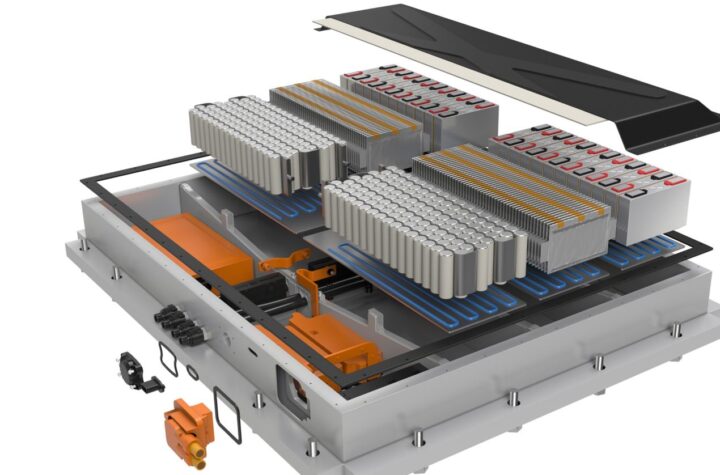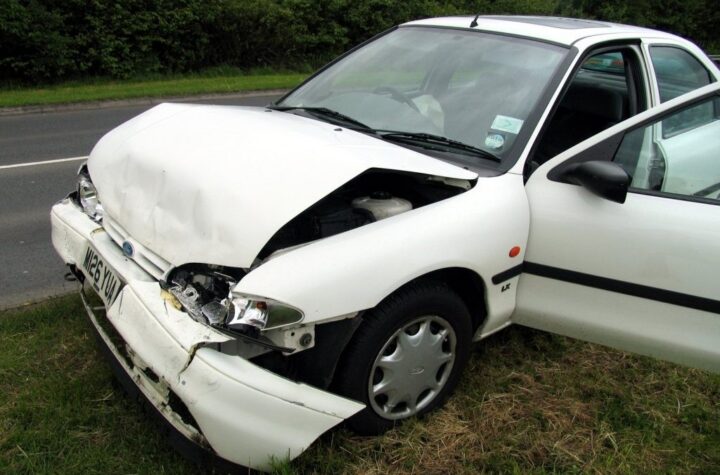
This March, the Ford Motor Company announced that its 2015 Ford F-150 pickup truck would be the first to feature a complete light emitting diode (LED) forward lighting system.
Seen as a key performance and styling differentiator, the LED lighting system is comprised of a low beam, high beam, light driver module, and turn module and park module. OSRAM worked closely with Tier 1 supplier Flex-N-Gate and DBM Reflex to help achieve the completely new front-end appearance and optic design.
According to Ford, when the assignment was to reinvent the Ford F-150 while maintaining its heritage of being “Built Ford Tough” even the headlamps were critical. Ford lighting expert John Teodecki and his team found the answer in LEDs. The lamps use 63% less energy than the halogen bulbs seen in competitor’s trucks, and the light quality and aesthetics of the technology are superior, Teodecki says. Most important, the LED headlamps in the new F-150 are more durable than conventional lights, and are made to last more than five times longer.
“Stand on it,” Teodecki said, perched atop an 11-pound F-150 headlamp unit. “We fire stones at this headlamp, expose it to extreme sun, soak it in saltwater, shoot rocks, rock salt and ice – this thing is very tough to crack.” The new OSRAM LED systems feature components from OSRAM Opto Semiconductors and are being assembled in Hillsboro, N.H., helping to reinforce the Ford F-150’s standing as one of the vehicles with the highest American-made content.
“Sophisticated technology advancements at OSRAM make it possible for us to work closely with Flex-N-Gate, DBM Reflex and Ford to provide a full LED forward lighting solution that met their design needs and that was essentially ‘Built Ford Tough,’” said David Hulick, Global Senior Marketing Director, Specialty Solid State Lighting, OSRAM SYLVANIA in a press statement.
“We are making significant investments at our Hillsboro manufacturing facility to support this project and training our local employees to produce the future of automotive lighting. Bringing such cutting-edge lighting innovation to one of the most iconic vehicles on the road today is generating a lot of pride in our factory,” added Hulick.
OSRAM Opto Semiconductors also supplied Thinfilm LED light sources for the taillights. LEDs facilitate unique designs, with lines that match the contour of the vehicle while providing a signature look. “Many F-150 drivers work in construction and are on the road early mornings and late into the night,” said Hulick. “Having clear visibility on the road is crucial for them, which is why this LED lighting technology is important for Ford’s customers,” he says. LED light is close to natural daylight.
Ford has been a lighting innovator since the 1970’s, often in conjunction with OSRAM. The 2013 Ford F-150 was the first mainstream pickup to feature a mercury-free high intensity discharge (HID) headlamp system on select models from OSRAM Automotive Lighting. The 2013 Mustang GT also featured the first LED fog lamp in the United States based on OSRAM’s standardized LED JOULE® system. In 2005, OSRAM Opto Semiconductors launched the MyColor Instrument cluster for the Mustang, which enabled interior lighting personalization for the first time.
Says Teodecki, “Remember the craze in the 1980s with truck light bars? It looks so cool. I’m telling you, this LED light tube is going to be the next big thing. Our new F-150 owners will be longing for dusk every day, just to show off their trucks in dramatic lighting.”
Automotive Industries (AI) asked Hulick how he expects LED lights to influence automotive design.
Hulick: LED technology gives the OEMs new design freedom, opens the door for enhanced headlamp performance features and provides a solid platform for higher levels of durability than are possible with traditional lighting technologies.
AI: What are some of the benefits of LED light tubes versus traditional lamps?
Hulick: Stylists want to use lighting to support brand identities. LEDs can be used in reflector, projector or light-guide applications, and also make it possible to reduce the mechanical size of the lighting assemblies.
AI: What kind of flexibility and durability do they offer?
Hulick: Many different design approaches work with LEDs because separate LEDs can be assembled in arrays. Traditional lighting, like halogen, is based on a single emitter. Because LEDs are solid state semiconductors they are much more resistant to shock and vibration than light sources that use a filament design. Furthermore, LEDs do not deteriorate as quickly as traditional lightsources. An LED design is expected to last the life of the vehicle, whereas traditional technology lightsources can be expected to be renewed several times over the life of the vehicle.
AI: How closely did OSRAM work with Flex-N-Gate and DBM Reflex to create the LED headlamps for Ford?
Hulick: The new F-150 headlamp is the result of collaboration between Ford, Flex-N-Gate and DBM Reflex. Ford established the design and performance objectives, Flex-N-Gate integrated the headlight technology into the vehicle, and DBM Reflex industrialized the unique, thick-lens optic; without which Ford’s requirements could not have been met. OSRAM integrated the lighting assembly with its electronic driver. In essence, OSRAM is responsible for taking 12 volt power from the vehicle and turning it into a beam pattern on the road.
AI: Describe OSRAM’s relationship with Ford – how have the two companies worked together in the past and how do you see the relationship going forward?
Hulick: Ford and OSRAM have collaborated to introduce almost all of the North American automotive lighting innovations since the late 1970’s. OSRAM’s American manufacturing and engineering footprint provides an invaluable platform for this purpose.
AI: What are some of the technologies/products that have emerged from this collaboration?
Hulick: Some of the North American automotive lighting innovations introduced by OSRAM and Ford include halogen sealed beams, halogen interchangeable lightsources and S8 Wedge signal lamps. These products were quickly adopted by other OEMs in the United States and established OSRAM as the leading automotive OEM lighting supplier in the market.
AI: How do you see the future of automotive lighting and what role does OSRAM Automotive Lighting hope to play in it?
Hulick: Future automotive lighting will have to support a growing array of solutions in response to styling, performance and durability initiatives. While it is clear that traditional technology will remain in use for the foreseeable future, LED technology opens the door for new solutions. Different OEMs in different regions will push product introductions based on new approaches, like OLED and Laser. Today, OSRAM is the leading full-line automotive supplier and intends to reinforce this position by keeping pace with an uninterrupted stream of lighting innovations.












More Stories
DuPont materials science advances next generation of EV batteries at The Battery Show
How a Truck Driver Can Avoid Mistakes That Lead to Truck Accidents
Car Crash Types Explained: From Rear-End to Head-On Collisions